For many individuals, skin tone is more than just a matter of appearance. It is deeply intertwined with self-esteem, perceived health, and even how people are treated in professional and social environments. Among the most common dermatological concerns affecting skin clarity are age spots, dark patches, and uneven pigmentation, which often accumulate over time due to sun exposure, hormonal changes, and the natural aging process. In recent years, medical advancements have ushered in a variety of non-invasive treatments to address these concerns. Among them, laser treatment for age spots and facial discoloration has emerged as a safe, effective, and increasingly popular method. With robust scientific backing, dermatological approval, and a growing body of clinical success stories, laser therapy offers both aesthetic and psychological benefits, particularly for those seeking to improve skin tone without undergoing invasive procedures.
You may also like: How to Choose Skin Care for Fine Lines: Evidence-Based Tips for Healthier, Younger-Looking Skin

Understanding the Science Behind Laser Spot Treatment
Laser spot treatment, in its most basic definition, uses focused beams of light to target areas of pigmented skin, breaking down excess melanin that causes discoloration. When administered by a trained professional, the procedure is both precise and minimally damaging to surrounding tissues. Different types of lasers, including Q-switched lasers, intense pulsed light (IPL), and fractional lasers, are selected based on the patient’s skin type, the severity of pigmentation, and the underlying cause of the discoloration. These devices emit energy that is absorbed by melanin in the skin, which then dissipates as the body naturally removes the pigment fragments through the lymphatic system.
Scientific studies have consistently demonstrated that laser for age spots yields visible results in as few as one to three sessions, especially when proper post-care is followed. Moreover, the underlying principles of laser therapy for age spots rest on decades of dermatological research, ensuring that the treatment is not only effective but also aligned with contemporary standards for patient safety. Importantly, modern lasers come equipped with advanced cooling systems and adjustable wavelengths, which help minimize discomfort and adapt the intensity of treatment to individual skin needs. These technological improvements have significantly lowered the risk of scarring, post-inflammatory hyperpigmentation, and other adverse effects that earlier generations of laser technology sometimes presented.
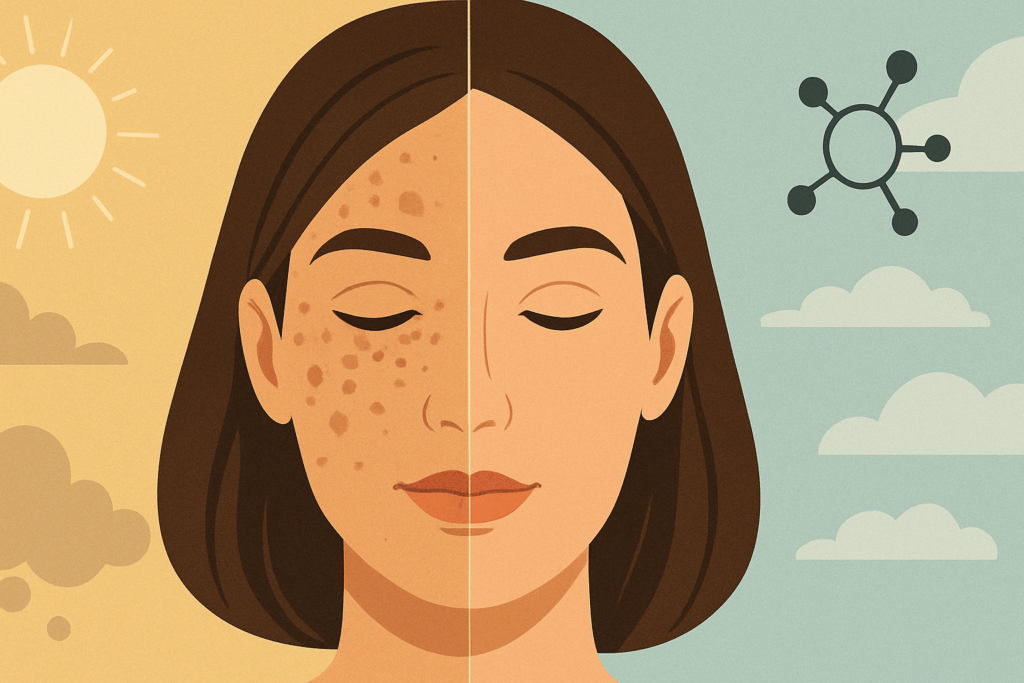
Why Age Spots and Facial Discoloration Develop Over Time
While often associated with aging, age spots are more accurately the result of cumulative sun exposure and environmental damage that manifest visibly in middle age and beyond. The skin’s melanocytes—the cells responsible for melanin production—become unevenly distributed or hyperactive over time, particularly in sun-exposed areas like the face, neck, and hands. Hormonal fluctuations, such as those occurring during pregnancy or menopause, can also lead to conditions like melasma, which appears as brownish patches on the cheeks and forehead. Additionally, inflammation from acne or skin injuries can leave behind persistent marks that do not fade on their own, prompting many to explore laser treatment for black marks on the face as a solution.
These discolorations are not medically harmful, but they often affect self-confidence and can be difficult to conceal with makeup. Over-the-counter creams may offer minimal lightening over long periods, but they rarely provide the level of clarity and evenness that laser age spot removal can achieve. As dermatologists increasingly recommend laser to remove spots on the face, it becomes clear that targeted energy-based treatments offer more substantial and longer-lasting results than topical alternatives. Furthermore, laser therapy allows for the selective destruction of melanin-laden cells without harming surrounding tissues, which makes it a favorable choice for those with busy lifestyles and minimal downtime.

Benefits of Choosing Laser Therapy for Age Spots
The decision to undergo laser therapy for age spots comes with a multitude of benefits, both cosmetic and psychological. Perhaps the most obvious advantage is the rapidity and precision of the treatment. Unlike bleaching creams or chemical peels, which may take weeks or months to show modest improvement, laser therapy often yields noticeable results after just a few sessions. This is particularly encouraging for individuals dealing with stubborn discoloration, as removing age spots with laser treatment has been shown to be one of the most efficient options for long-term skin tone improvement.
Another key benefit lies in the versatility of laser spot treatment. Whether targeting isolated age spots, diffuse pigmentation, or larger areas affected by melasma or sun damage, lasers can be fine-tuned to match the patient’s unique skin profile. Many patients also appreciate the non-invasive nature of the procedure. There are no incisions, stitches, or prolonged recovery periods. Most people experience only mild redness or sensitivity that subsides within a day or two, allowing them to return to normal activities almost immediately. Additionally, patients seeking to get rid of age spots with laser technology often report improved skin texture, enhanced collagen production, and a rejuvenated appearance that surpasses mere pigment removal.
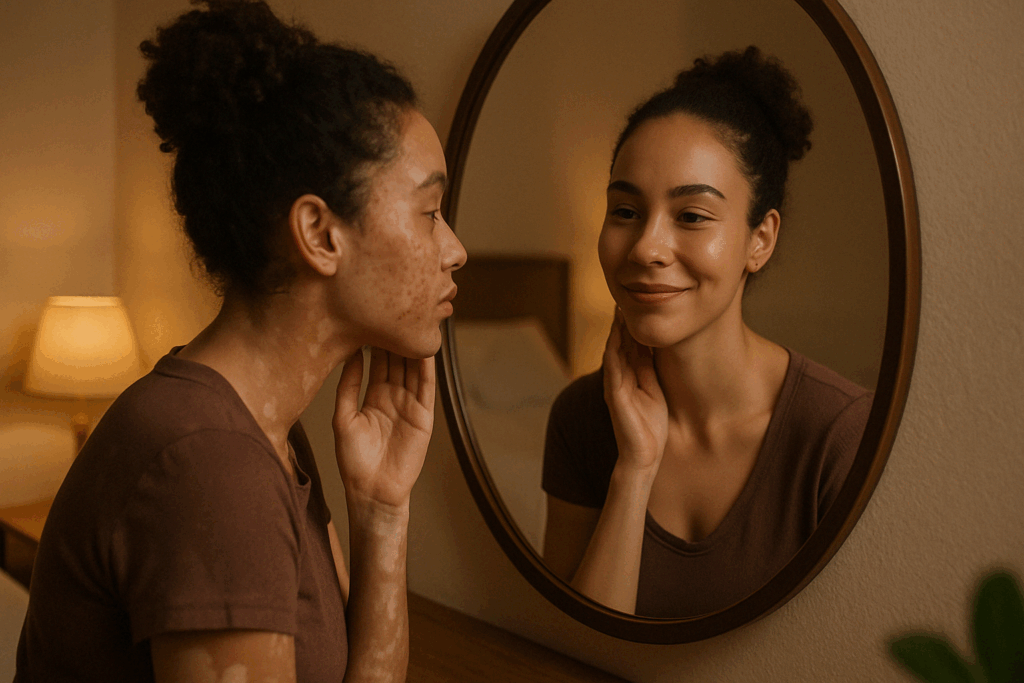
The Psychological Impact of Skin Discoloration and the Healing Power of Clarity
The appearance of dark patches or age spots on the face can carry a disproportionate emotional toll, especially in cultures that equate even-toned skin with youth, beauty, and vitality. Studies in psychodermatology—a field that explores the connection between skin conditions and mental health—suggest that visible skin irregularities can contribute to social anxiety, lowered self-esteem, and even depressive symptoms. In this context, laser treatment for dark patches on the face represents more than just a cosmetic intervention. It becomes a means of emotional relief and psychological empowerment.
Many patients who undergo laser for discoloration report significant improvements not just in their skin, but in how they perceive themselves. By removing the visual markers of aging or sun damage, individuals often feel more confident in both personal and professional settings. This is especially relevant in an era where high-definition cameras, social media filters, and video calls place increased scrutiny on facial appearance. As such, the benefits of laser age spot removal go far beyond the physical—they can translate into meaningful psychological transformations.
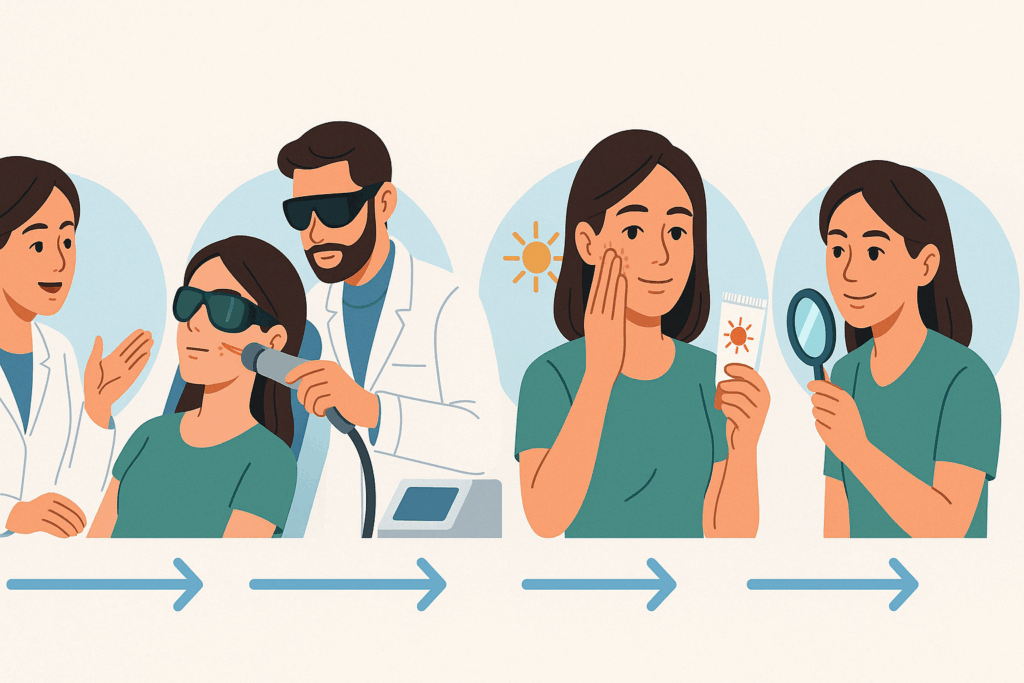
Safety Considerations and Best Practices for Optimal Results
While laser therapy is generally safe when performed by a licensed dermatologist or trained technician, certain precautions must be taken to avoid complications. Pre-treatment consultations are critical to determine whether the patient is a good candidate for the procedure. Factors such as skin type, history of keloid formation, current medications, and the presence of active infections must all be assessed. Fitzpatrick skin typing, which categorizes skin by its reaction to sun exposure, is often used to select the appropriate laser settings and minimize risks like post-inflammatory hyperpigmentation.
It is equally important for patients to follow pre- and post-procedure guidelines. These often include avoiding sun exposure, discontinuing certain skincare products (such as retinoids or acids), and using high-SPF sunscreen diligently after the treatment. Failure to adhere to these recommendations can compromise results and increase the risk of side effects. That said, when executed properly, laser treatment for black marks on the face offers an excellent safety profile, with minimal discomfort and virtually no downtime. This has made it an appealing choice for those looking to enhance their appearance while maintaining a fast-paced lifestyle.
Informed patients are more likely to experience favorable outcomes, which is why practitioners often emphasize education during consultations. Clients should understand that results may vary depending on the depth and origin of pigmentation, and that multiple sessions might be necessary for optimal clearing. Transparency about expectations fosters trust and aligns the therapeutic goals between provider and patient, enhancing both safety and satisfaction.
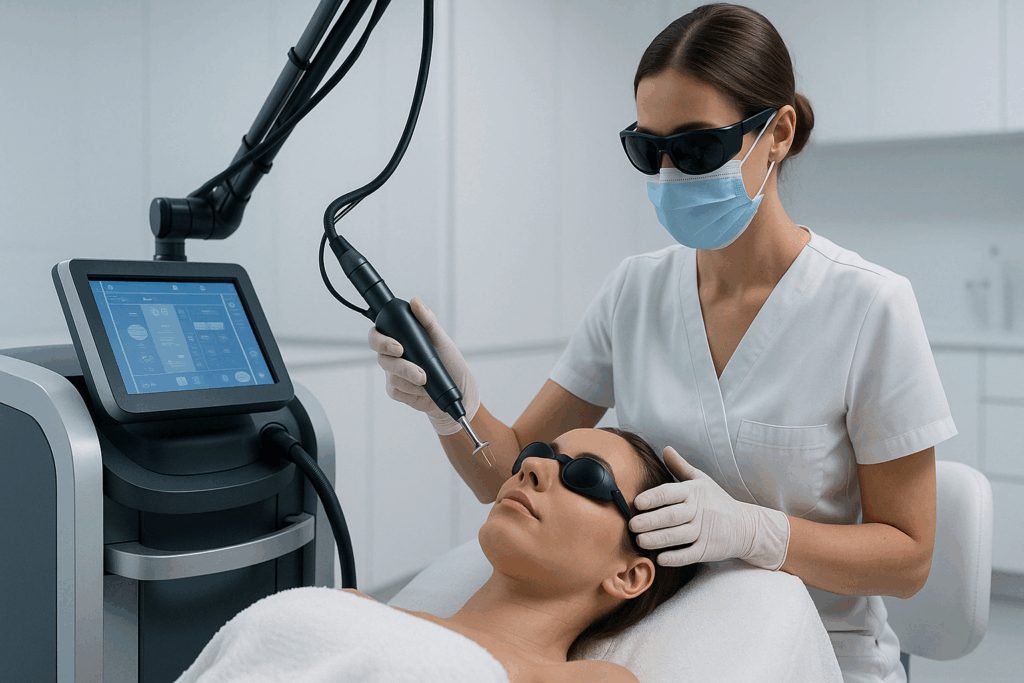
The Role of Technology in Advancing Laser Spot Treatments
The evolution of laser technology has significantly improved both the efficacy and safety of skin treatments. Modern machines can adjust their wavelength, pulse duration, and energy output in real time, providing personalized care that accounts for subtle differences in skin tone and pigmentation depth. For example, fractional lasers create micro-columns of controlled damage surrounded by healthy tissue, which speeds up healing and reduces downtime. Meanwhile, Q-switched lasers are particularly effective for breaking down deeper pigment deposits without harming the epidermis.
Many devices also include integrated cooling systems that provide immediate relief during treatment, thereby enhancing patient comfort and reducing the need for topical anesthetics. Some systems use dual wavelengths or multiple handpieces to treat a variety of skin concerns within a single session, offering a comprehensive approach to facial rejuvenation. In this way, laser to remove spots on the face has become not just more effective, but also more accessible and customizable than ever before. Patients can now benefit from tailored treatments that address their specific concerns while minimizing risk and recovery time.
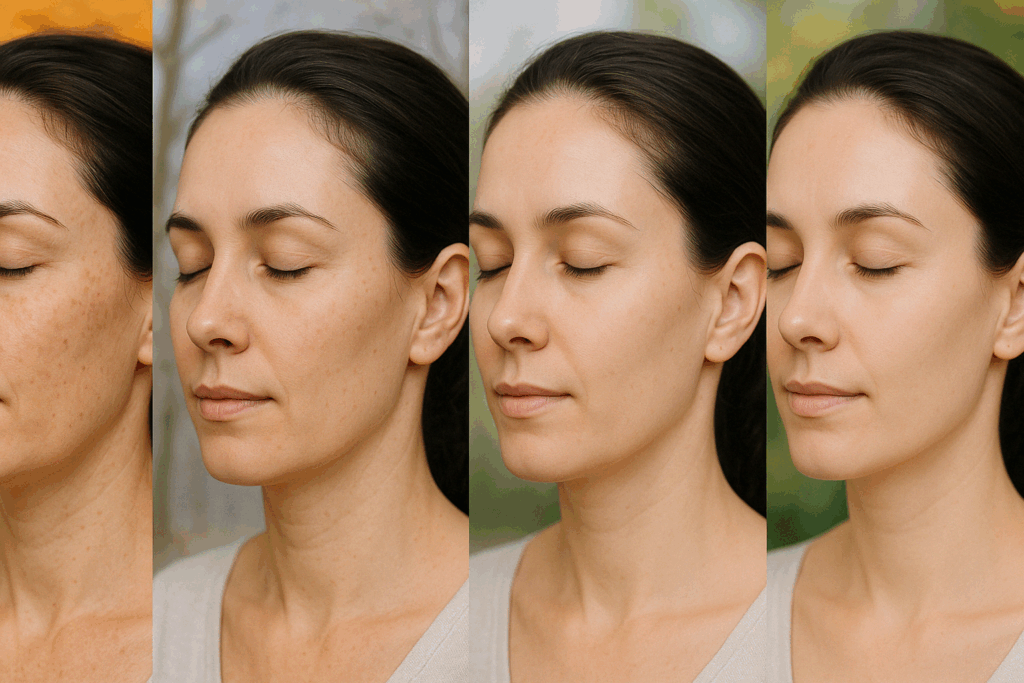
Realistic Expectations and Long-Term Maintenance
Although laser therapy offers substantial improvements, it is important for patients to approach the procedure with realistic expectations. Laser treatment for age spots is not a permanent solution unless proper maintenance is followed. Continued exposure to ultraviolet radiation, for instance, can stimulate melanin production and lead to the reappearance of discoloration. Therefore, post-treatment care must include rigorous sun protection, as well as periodic maintenance sessions if needed.
Additionally, patients should be prepared for the fact that multiple sessions are often required to achieve optimal results. Depending on the severity and cause of pigmentation, as well as the type of laser used, a full course of treatment may span several months. However, the gradual nature of improvement ensures that the skin has time to heal and adapt, reducing the risk of complications. It also allows for a more natural-looking transformation, which many clients prefer.
Skincare routines can be adjusted to prolong the benefits of treatment. Dermatologists often recommend antioxidant serums, barrier-repairing moisturizers, and gentle exfoliants to support ongoing clarity and evenness. When these regimens are combined with professional laser treatment for dark patches on the face, patients can maintain a radiant complexion that reflects not only external care but also internal well-being.
Laser Treatment and Holistic Skin Health
One of the lesser-discussed yet increasingly appreciated aspects of laser spot treatment is its contribution to overall skin health. Beyond pigment correction, certain laser modalities also stimulate collagen and elastin production, which are critical for skin firmness and elasticity. As a result, patients may observe improvements in skin texture, pore size, and even fine lines—benefits that go well beyond the initial intent of treating age spots.
Furthermore, incorporating laser for age spots into a holistic skincare strategy emphasizes prevention as much as correction. By reducing the visible signs of past damage and enhancing the skin’s resilience against future stressors, laser therapy contributes to a more comprehensive approach to wellness. It aligns well with other healthy lifestyle choices, such as maintaining a balanced diet, managing stress, and staying hydrated, all of which play roles in skin integrity and appearance.
For individuals who value an integrative perspective on health, the ability to improve skin clarity through safe, effective means such as laser therapy is an empowering option. It demonstrates how science and technology can support not only aesthetic enhancement but also emotional and psychological flourishing.
Frequently Asked Questions: Laser Spot Treatment and Facial Discoloration
1. Can laser spot treatment address discoloration from post-inflammatory hyperpigmentation (PIH)?
Yes, laser spot treatment is often used to treat post-inflammatory hyperpigmentation caused by acne, injuries, or other skin trauma. While PIH can sometimes resolve on its own, laser therapy accelerates the process by targeting melanin clusters directly and breaking them down for natural removal. Dermatologists often recommend fractional or Q-switched lasers for this purpose, depending on the depth and persistence of the pigmentation. Compared to topical agents, laser for discoloration tends to produce more consistent outcomes, particularly in patients with darker skin types where hyperpigmentation is more pronounced. It’s essential, however, to choose a clinic experienced in treating PIH with lasers to avoid rebound hyperpigmentation.
2. How does laser treatment for age spots compare with chemical peels or microneedling?
Laser treatment for age spots offers more targeted precision than chemical peels or microneedling, which work by broadly resurfacing the skin. While chemical peels exfoliate superficial layers and microneedling stimulates collagen through micro-injury, laser therapy directly addresses melanin concentration without physically breaking the skin barrier. This makes laser therapy for age spots particularly effective in cases where pigmentation lies deeper within the dermis. Moreover, lasers typically offer faster recovery times and more visible results in fewer sessions. That said, combination therapies that include laser age spot removal alongside peels or microneedling are sometimes used for comprehensive rejuvenation.
3. Is laser age spot removal suitable for people with melasma or hormonally induced pigmentation?
Laser age spot removal can be helpful for melasma, but it must be approached cautiously. Melasma is notoriously sensitive to heat and light, meaning some lasers can exacerbate the condition if used improperly. Dermatologists usually start with low-fluence settings and might combine laser for discoloration with topical treatments like tranexamic acid or hydroquinone. Unlike isolated age spots, melasma tends to be more diffuse and recurrent, so laser to remove spots on face in such cases often requires long-term management rather than a one-time solution. Patients should also commit to strict sun protection post-procedure to prevent reactivation of pigmentation.
4. What should patients consider before choosing laser treatment for black marks on face?
Before opting for laser treatment for black marks on face, patients should undergo a thorough skin evaluation, ideally including a Wood’s lamp analysis or digital skin imaging. Not all dark marks are created equal—some may be vascular in origin, others due to residual acne scars, and some even signs of skin cancer. Understanding the root cause helps select the correct laser modality and intensity. Additionally, individuals with a history of cold sores or certain medications (e.g., isotretinoin) may require special precautions. Patients should also weigh the cost of multiple sessions, as laser for age spots typically requires a series for full effect.
5. Can laser therapy for age spots be used preventively to maintain skin clarity?
Interestingly, some dermatologists now use laser therapy for age spots as a maintenance tool rather than solely a corrective one. Light-based treatments like IPL are sometimes scheduled seasonally to combat the accumulation of new pigmentation and maintain skin clarity. This strategy works especially well for individuals with a history of sun damage or photosensitive conditions. While it doesn’t technically “prevent” age spots from forming, regular laser spot treatment can help reduce their intensity and delay their reappearance. Preventive therapy is most effective when paired with daily sun protection and antioxidant-rich skincare.
6. What are the social and professional impacts of removing age spots with laser treatment?
Removing age spots with laser treatment often goes beyond aesthetics—many patients report improved self-confidence and even positive shifts in how they are perceived professionally. In competitive work environments where youthful appearance may influence perception, clearer skin can subtly enhance credibility and presence. This is particularly true for public-facing roles or those in industries like sales and media. On a social level, individuals often feel more comfortable forgoing heavy makeup and engaging more confidently in photo-rich settings. In this way, laser to remove spots on face can serve as a psychosocial investment as much as a cosmetic one.
7. Are there cultural considerations when recommending laser for discoloration?
Absolutely. In cultures where lighter or more even-toned skin is considered a beauty ideal, laser for discoloration may be more socially encouraged or even expected. However, this can sometimes result in pressure to overuse procedures or pursue them without proper guidance. It’s important for practitioners to balance aesthetic goals with realistic expectations and ethical medical practices. Additionally, individuals with darker skin tones (Fitzpatrick types IV-VI) may face higher risks of post-laser hyperpigmentation if treated improperly. Cultural competence and personalized care are essential when recommending laser age spot removal to diverse populations.
8. Can laser treatment for dark patches on face improve skin barrier health?
Indirectly, yes. While laser treatment for dark patches on face does not directly restore the skin barrier, it can stimulate collagen and elastin production, which in turn supports overall skin structure and resilience. Some fractional lasers also promote epidermal turnover, encouraging newer, healthier cells to replace damaged ones. Following laser treatment, dermatologists often prescribe ceramide-rich moisturizers or hyaluronic acid serums to reinforce the barrier during recovery. When done under expert supervision, this approach enhances not only pigment correction but also functional skin health. The result is skin that both looks and behaves more youthfully.
9. Are there emerging technologies that will enhance laser spot treatment in the near future?
The field of aesthetic dermatology is rapidly evolving, and several innovations are poised to enhance laser spot treatment. Picosecond lasers, for example, offer ultra-short pulses that break pigment into even finer particles, allowing for faster clearance with less thermal damage. AI-assisted laser mapping and robotic precision devices are also being tested for customized delivery of laser therapy for age spots. Additionally, researchers are exploring synergistic effects between lasers and topical drug delivery systems, potentially enabling better pigment reduction with fewer sessions. These emerging technologies may soon redefine how we get rid of age spots using laser-based solutions.
10. How does skin tone influence the choice of laser for age spots?
Skin tone plays a crucial role in selecting the appropriate laser for age spots, as darker skin is more susceptible to unwanted side effects like hyperpigmentation or hypopigmentation. For Fitzpatrick skin types I-III, more aggressive lasers like Er:YAG or ablative CO2 may be options, whereas those with types IV-VI often fare better with Nd:YAG or Q-switched lasers. It’s not just about pigment depth but also the skin’s inherent response to heat and inflammation. A skilled dermatologist will customize laser spot treatment settings to minimize risk while optimizing results. Understanding this nuance is critical for safely and effectively removing age spots with laser treatment across all skin types.
Conclusion: Why Laser Therapy for Age Spots Is a Safe and Effective Path to Clearer Skin
In a world where first impressions matter and self-confidence is often linked to appearance, having clear, even-toned skin can significantly impact quality of life. Laser treatment for age spots and facial discoloration represents a scientifically validated, medically sound, and aesthetically rewarding solution for those seeking to improve their skin tone without resorting to invasive measures. From the underlying physics of pigment breakdown to the emotional relief of seeing one’s skin restored, the benefits of laser therapy are both broad and deeply personal.
Whether targeting small age spots, lingering acne scars, or broader areas of sun-induced pigmentation, patients now have access to safe, tailored treatments that deliver noticeable results. With proper guidance, realistic expectations, and a commitment to post-treatment care, individuals can enjoy not only a more radiant complexion but also a renewed sense of confidence and well-being. In short, laser spot treatment is more than a dermatological procedure—it is a transformative step toward holistic skin health and self-empowerment.
Was this article helpful? Don’t let it stop with you. Share it right now with someone who needs to see it—whether it’s a friend, a colleague, or your whole network. And if staying ahead on this topic matters to you, subscribe to this publication for the most up-to-date information. You’ll get the latest insights delivered straight to you—no searching, no missing out
Further Reading:
Age spots (liver spots) – Diagnosis & treatment
Laser Treatment for the Removal of Dark Spots
Skin Pigmentation Types, Causes and Treatment
Disclaimer
The information contained in this article is provided for general informational purposes only and is not intended to serve as medical, legal, or professional advice. While Health11News strives to present accurate, up-to-date, and reliable content, no warranty or guarantee, expressed or implied, is made regarding the completeness, accuracy, or adequacy of the information provided. Readers are strongly advised to seek the guidance of a qualified healthcare provider or other relevant professionals before acting on any information contained in this article. Health11News, its authors, editors, and contributors expressly disclaim any liability for any damages, losses, or consequences arising directly or indirectly from the use, interpretation, or reliance on any information presented herein. The views and opinions expressed in this article are those of the author(s) and do not necessarily reflect the official policies or positions of Health11News.